mobile View, to the German Version tap the flag


- Nation of the Frisians
- western teutonic tribe
- own name: Friezen, Fresena
• Flags
• regional Flags
• Meaning/Origin of the Flag
• Map
• History
• Origin of the Nations's Name
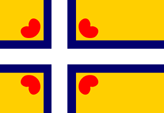
2006,
Interfrisian flag of the Groep fan Auwerk,
ratio = 9:13,
Source, by: Groep fan Auwerk



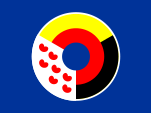
2009,
Flag of the Interfrisian Council,
ratio = 3:4,
Source, by: Interfriesischer Rat




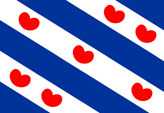
Western Frisia,
ratio = 9:13,
Source, by: Wikipedia (D)





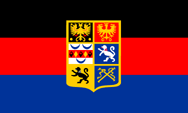
Eastern Frisia,
ratio = 3:5,
Source, by: genealogy.net





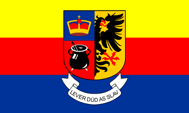
Northern Frisia,
ratio = 3:5,
Source, by: utersum.de





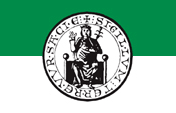
Country of Wursten,
ratio = 2:3,
Source, by: Wikimedia Commons,
By "Landesstube alten Landes Wursten" / M. Tegge
("Landesstube alten Landes Wursten")
[Public domain], via Wikimedia Commons




The first interfrisian flag was presented for the first time on 23rd of September in 2006 on the occasion of the Holiday of the Battle of Warns. It should embody an unifying symbol of the in various states and regions living Frisians. It shows a golden-yellow bunting with a for West-Teutons untypical white, blue bordered scandinavian cross. In the four corners of the cross is placed per one red Pompeblêd (sea-rose leaf). The colours of the flag were borrowed from the flags of all frisian countries and in this way every region is present. The cross represents the christian religion of the Frisians. The gold stands for the fruitful soil which is covered with flowers, wheat or rape. Blue stands for the sea and the channels. White represents the bright light of the sun and the peace. The red sea-rose leafs stand for cooperation and parity. 1)
In 2009, the public was presented another interfrisian flag, which also combines the colours of the various Frisian countrysides. 2)
The "Landesstube of the Old Country of Wursten", an association of the today's authorities which are placed in the historical countryside of Wursten, adopted in 2007 the modern flag of the historic region of the country of Wursten. The flag shows the old Weser mouth's colours green and white, and centered on it the medieval seal of the Wurt Frisians. It shows Charlemagne, who was for the Frisians in the Middle Ages the guarantor of their liberties. 3)
Source: 1) Groep fan Auwerk – Die interfriesische Flagge,
2) Wikipedia (D),
3) Wikimedia Commons - M. Tegge - Landesstube alten Landes Wursten

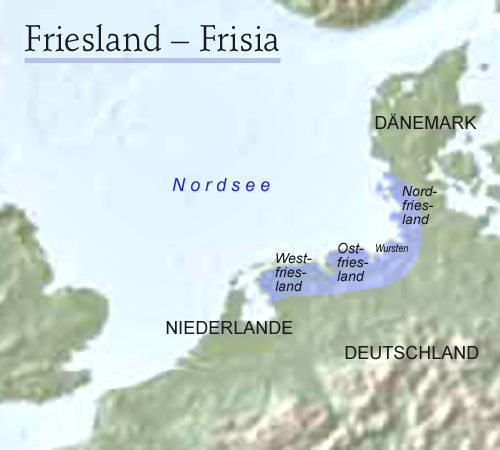
Map: Volker Preuß

12 B.C. · first mention of the Frisians by Plinius the Elder, settlements between Rhine River and Ems River (Western Frisia)
1st century · contacts to the Roman Empire
5th–6th century · the Frisians settle the coast to the Weser River (Eastern Frisia) and banish the tribe of the Chauks
7th–8th century · christianization
8th century · conquest of Western Frisia by the Frankish Empire, some years later conquest of Eastern Frisia by the Frankish Empire
ca. 800 · the Frisians settle the North Frisian Islands
11th century · the Frisians settle the today's Northern Frisia, Danish supremacy
12th–14th century · the Frisians are only subordinated to the supremacy of the emperor, "Frisian Freedom"
1524 · Frisia western the Ems River (Western Frisia) comes to the Habsburg's Netherlands, Eastern Frisia becomes an imperial county, later even a principality within the German Empire
1744 · death of the Frisian prince Carl Edzard, vanish of the house of the Cirksena, Eastern Frisia comes to Prussia
1864 · German-Danish War, Schleswig (Sleswig) (incl. Northern Frisia) comes to Prussia
Source: Wikipedia (D), Volker Preuß

The denomination "Frisians" has its roots in the Germanic word "frisle", what means "ringlet". Obviously the ancient Frisians had longer hairs. Sometimes the origin of the word "Frisians" is derived from the word "free".
Source: Handbuch der geographischen Namen


![]()




















